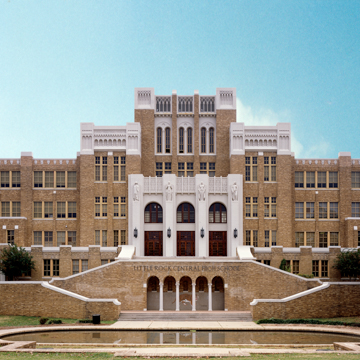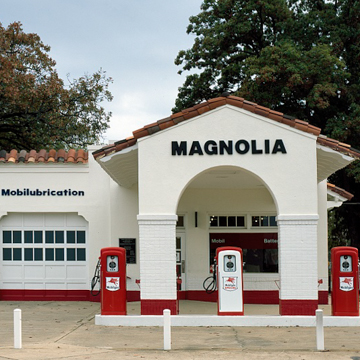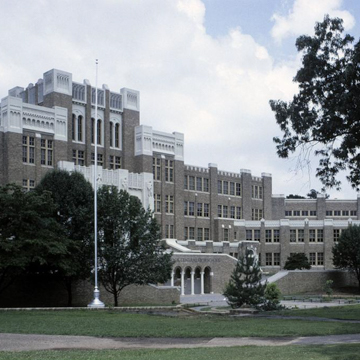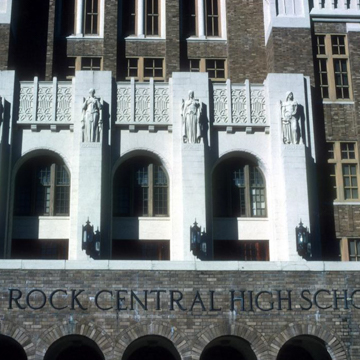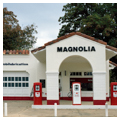The Little Rock Central High School National Historic Site includes Little Rock Central High School, the former Magnolia Gas Station, and a visitor center. From the moment of its completion in 1927 as Little Rock Senior High School, the principal building was a landmark. Two blocks in length, the school was second only to the Arkansas State Capitol in size. In plan, the school is roughly C-shaped and symmetrical, with a six-story central portion fronted by a monumental double stairway and a triple-arched entrance. Identical classroom wings flank the central section. The building is basically Collegiate Gothic in style, in the modernized Art Deco manner of the 1920s, seen most notably on the sculptural effects around the entrance. Inside were 126 classrooms for the three thousand students and the auditorium that could accommodate two thousand. The school was segregated, serving white pupils only.
In September 1957, the building gained national and international notoriety when efforts to integrate the school in compliance with a 1954 federal mandate were met with violent protests. On September 23, 1957, nine African American students, escorted by local police and state troopers, attempted to enter the building and were met by an angry mob of whites protesting the policy of integration. Violence erupted, and the black students were removed from the school. Though President Dwight D. Eisenhower mobilized U.S. troops to go to Little Rock and federalized the Arkansas National Guard to carry out the law of the land, the fight was sustained by the state’s segregationists, and Governor Orval Faubus closed the city’s high schools for the 1958–1959 academic year. His action was declared unconstitutional, and Little Rock’s high schools reopened and were integrated in 1959. The crisis at the school was the first important test of the U.S. Supreme Court’s 1954 decision, Brown v. Board of Education. In 1998 the school was designated a National Historic Site, the only high school in the nation to be granted that status.
The site also includes the former Magnolia Gas Station (1920s) at 2125 W. Daisy L. Gatson Bates Drive. The station, which is across the street from the school, served as a gathering place during the civil rights movement. In 1997, Witsell Evans Rasco restored it to its 1957 appearance for use as a visitor center; it now serves as an education center. Built by the Magnolia Petroleum Company of Texas (later Mobil), the Spanish Revival station is residential in scale, with white stuccoed walls and a red tile roof that extends as a canopy to shelter automobiles and patrons pumping gas. The canopy’s round-arched front carries the station’s name in large red letters. A new visitor center opened in 2007, with the nine African American students, who fifty-five years earlier integrated the school, in attendance at the dedication.





















